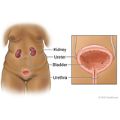Skip to main navigation
Skip to main content
Skip to footer
For
Medicare
For
Providers
For
Brokers
For
Employers
Español
For Individuals & Families:
For Individuals & Families
Medical
Dental
Other Supplemental
Explore coverage through work
How to Buy Health Insurance
Types of Dental Insurance
Open Enrollment vs. Special Enrollment
See all topics
Shop for Medicare plans
Member Guide
Find a Doctor
Log in to myCigna
Home
Knowledge Center
Wellness Library
Overflow Incontinence
Overflow Incontinence
What is overflow incontinence?
Overflow incontinence means that you may have the urge to urinate, but you can release only a small amount. Then later, urine leaks out. Or it can mean that your bladder becomes too full and then leaks urine.
What causes it?
Overflow incontinence can be caused by:
- Conditions that affect the nerves. Examples include diabetes, Parkinson's disease, multiple sclerosis, and spinal cord injuries. They may make it hard to tell when your bladder is full. Or they may make it harder for the bladder to contract.
- A blockage in the urinary tract. This blockage could be from uterine fibroids, from an enlarged prostate, or from scars that cause narrowing of the tube that carries urine out of the body (urethra).
- Weakness in the muscle that expels urine from the bladder (detrusor). The bladder can't empty normally.
- Certain medicines.
What are the symptoms?
Symptoms of overflow incontinence include:
- An ongoing leaking or dribbling of urine, or the sudden release of urine.
- A feeling of fullness in the bladder even after urination.
- A urine stream that stops and restarts during urination.
- Difficulty urinating even while feeling the urge to urinate.
How is overflow incontinence treated?
Treatments for female anatomy
Overflow incontinence can be treated with:
- Pelvic floor physical therapy (PT). PT may include learning exercises to tighten and strengthen your pelvic muscles. These are called Kegel exercises.
- A pessary. A pessary fits into the vagina and supports the pelvic organs. It may be used if a pelvic organ moves out of its normal position (prolapse).
- A catheter. A catheter is a thin, flexible tube that allows urine to drain out. It is inserted into the bladder through the urethra. This may be a straight catheter, which is inserted several times a day. Or it may be a suprapubic catheter, which is put into the bladder through a small cut in the belly.
- Surgery. Surgery may be needed to correct problems that cause overflow incontinence, such as obstructions or abnormal growths in the urinary tract.
- Sacral nerve stimulation. An electrical stimulator under your skin sends pulses to the sacral nerve in your lower back. This nerve plays a role in bladder storage and emptying.
Treatments for male anatomy
Overflow incontinence can be treated with:
- Medicine. Medicines can be used to make the prostate smaller. This relieves pressure on the urethra so the bladder can empty more normally. Medicines can also help the urine flow better.
- A catheter. Some people may need a catheter to allow the bladder to empty normally. If the bladder gets too full, the situation can become urgent. Unless a catheter is used to drain the urine and relieve the pressure, the bladder and kidneys can be damaged.
- Surgery. Surgery for an enlarged prostate may include minimally-invasive procedures or transurethral resection of the prostate (TURP).
Other treatments
Other treatments include treating constipation and stopping or reducing doses of medicines that might be causing the incontinence.
This information does not replace the advice of a doctor. Ignite Healthwise, LLC, disclaims any warranty or liability for your use of this information. Your use of this information means that you agree to the Terms of Use. Learn how we develop our content.
To learn more about Ignite Healthwise, LLC, visit webmdignite.com.
© 2024-2025 Ignite Healthwise, LLC.
<cipublic-spinner variant="large"><span>Loading…</span></cipublic-spinner>
